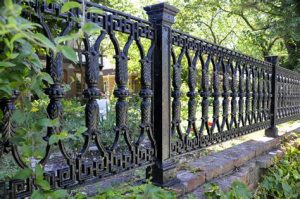Discover essential tips for winter installations, from selecting materials to preparation and managing weather challenges. Stay ahead with expert techniques and tools.As the winter chill sets in, many homeowners might hesitate to embark on fencing projects, but with the right approach, installing a fence during this season can be efficient and fruitful. Not only does a winter installation minimize potential delays in your landscaping plans, but it can also provide unique advantages that summer projects can’t offer. In this blog post, we’ll explore key strategies for maximizing efficiency when installing fences in winter, from selecting the best materials to preparing for cold weather. We’ll also delve into specialized techniques for winter installations, the essential tools you need, and how to navigate the unpredictable weather challenges that winter presents. By the end of this guide, you’ll be equipped to tackle your fencing project with confidence, regardless of the frost in the air.
Choosing the Right Materials
When it comes to installing fences during the winter, choosing the right materials is crucial for ensuring durability and efficiency. The cold weather can affect the performance of certain materials, making it essential to select those that can withstand extreme conditions without compromising integrity.
Wood is a popular choice for fencing, but it’s important to consider its moisture content. Using pressure-treated wood is advisable, as it can resist rot and decay even in wet conditions. On the other hand, vinyl and metal fences are excellent options since they are less affected by temperature fluctuations and moisture. Both materials provide high longevity and require minimal maintenance, making them perfect for winter installations.
Another aspect to consider is the availability of materials. It’s wise to source local suppliers who can provide materials that are already acclimatized to your area’s winter climate. This ensures that they will perform as expected when installed.
Preparation for Cold Weather
When it comes to installing fences during the winter months, proper preparation for cold weather is crucial. The drop in temperatures can affect both the materials used and the overall installation process. Understanding how to effectively prepare can make a significant difference in ensuring that the installation is not only smooth but also durable.
Before starting any installation, it’s advisable to check the weather forecast. Look for any severe weather alerts that could affect the ground conditions or work safety. Snow, ice, and heavy winds can complicate installation efforts, so staying informed about the weather can help you plan effectively.
Additionally, consider using weather-resistant materials that can withstand low temperatures. Options such as vinyl or treated wood tend to perform better than untreated wood in cold climates. It’s also important to keep your tools and equipment in a warm environment prior to use, as this will help avoid equipment failure and aid in more efficient installation.
Winter-Specific Installation Techniques
Installing fences during the winter presents unique challenges, but with the right winter-specific installation techniques, you can maximize efficiency and ensure quality results.
- Maintaining Ground Temperature: Before starting your installation, ensure that the ground is thawed to a certain depth. This can be achieved by using heaters or keeping the area covered to retain heat.
- Adjusting Digging Methods: Traditional digging methods may not work well in frozen ground. Using a powered auger or an insulated post hole digger can help penetrate tougher soil effectively.
- Using Alternative Materials: When the temperature drops, some materials can become brittle. Consider utilizing weather-resistant materials that can withstand winter conditions without compromising structural integrity.
- Opt for Modular Designs: If possible, choose modular fence designs that can be assembled easily and require less precision in harsh winter conditions.
- Securing Posts Quickly: When placing fence posts, minimize the time they spend exposed to low temperatures. Have your concrete mix ready to go and set the posts swiftly to reduce the risk of frost damage.
Moreover, it’s crucial to keep an eye on the weather forecast. If snow or extreme cold is approaching, it may be wise to adjust your schedule to avoid halting your project mid-way. Efficiency is all about understanding and adapting to your environment.
Lastly, always wear appropriate winter gear while working. Staying warm keeps the focus on the task at hand rather than being distracted by discomfort.
Tools and Equipment for Winter Installations
When it comes to installing fences in winter, having the right tools and equipment is essential for maximizing efficiency and ensuring quality work. The cold weather presents unique challenges that require specialized tools designed to handle adverse conditions. Below are some key tools and equipment that every installer should consider for winter installations.
Essential Tools for Winter Fence Installation
- Post Hole Digger: An essential for digging holes in frozen ground. Choose a heavy-duty model with sharp blades.
- Concrete Mixer: For mixing quick-setting concrete that can withstand low temperatures.
- Power Drill: Ensure you have a reliable drill to handle screws and bolts effectively, even in cold conditions.
- Measuring Tape: Accurate measurements are crucial, especially when dealing with snow and ice that can affect visibility.
Protective Gear
In addition to tools, having the proper protective gear is vital to ensure the safety and comfort of the installation crew.
- Insulated Gloves: Keep your hands warm while providing grip and dexterity.
- Winter Boots: Waterproof boots with good traction are essential to prevent slips and falls on icy surfaces.
- Thermal Clothing: Layering with moisture-wicking fabrics helps maintain body heat.
Additional Equipment
- Generator: A portable generator can power electric tools when working in remote locations without access to electricity.
- Heat Gun: Useful for thawing frozen ground or warming materials prior to installation.
- Tarps or Covers: To protect tools and materials from snow accumulation during the workday.
By utilizing the right tools and equipment, you can significantly enhance your efficiency during winter fence installations.
Managing Weather-Related Challenges
When it comes to fencing installations during the winter months, managing weather-related challenges is crucial for ensuring both safety and efficiency. The unpredictable nature of winter weather can pose significant obstacles, including snow accumulation, freezing temperatures, and icy ground conditions. Understanding how to navigate these challenges is essential for a successful project.
One of the most effective methods for managing these weather-related challenges is to stay informed about forecasts. Regularly checking weather reports allows you to plan your installation around favorable conditions. If heavy snow or severe cold spells are predicted, consider rescheduling the job to prevent delays and ensure the safety of your crew.
Another important consideration is the tools and techniques used during installation. For instance, utilizing heated water to soften the ground can assist in digging post holes, while specialized equipment, like snow removal tools, ensures that your installation site remains accessible. Furthermore, keeping an efficient workflow is vital; this means organizing tasks in a manner that minimizes exposure to harsh conditions and maximizes productivity during suitable windows of weather.
Additionally, establishing a buffer zone around your work area can protect your team and materials from the elements. Setting up tarps or temporary shelters can shield workers from wind and precipitation, making it easier to stay focused on the task at hand. By effectively managing these weather-related challenges, you can achieve a successful and timely fence installation despite the winter conditions.
Frequently Asked Questions
What are some advantages of installing fences in winter?
Winter installation can lead to less crowded job sites, reduced material costs, and quicker project completion due to fewer weather-related interruptions.
What types of fences are best suited for winter installation?
Vinyl and chain link fences are often recommended for winter installation as they are less prone to damage from cold temperatures compared to wooden fences.
How can frozen ground affect fence installation?
Frozen ground can make it more difficult to dig post holes, which may require specialized equipment or techniques to ensure proper installation.
What precautions should be taken when installing fences in cold weather?
It’s essential to ensure that the ground is stable and to use appropriate safety measures to prevent slips or equipment malfunctions due to ice or snow.
How does winter weather influence the curing time for certain fence materials?
Cold temperatures can slow down the curing process for concrete and other materials, so it’s important to account for extended time frames when setting posts.
Are there specific tools that are better for winter fencing projects?
Tools such as heated water containers for mixing concrete, insulated gloves, and sturdy footwear can improve efficiency and safety during winter fence installation.
What should homeowners consider when hiring a contractor for winter fence installation?
Homeowners should look for contractors with experience in winter installations, proper licensing, and equipment suited for cold-weather work to ensure quality and efficiency.





